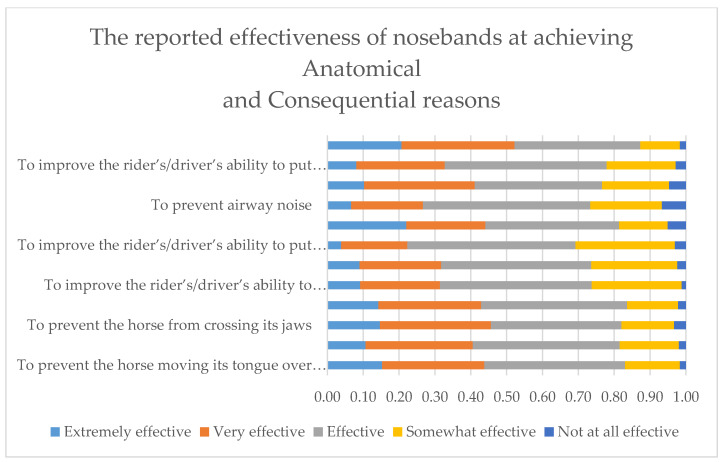Figure 1.
The reported relative effectiveness of nosebands at fulfilling the Anatomical (first four listed reasons) and Consequential (the next eight) reasons for their use. Anatomical reasons for noseband use: To prevent the horse moving its tongue over the bit, To prevent the horse opening its mouth, To prevent the horse crossing its jaws and To prevent the bit sliding through the horse’s mouth. Consequential reasons for noseband use: To improve the riders/drivers ability to decelerate the horse, To improve the riders/drivers ability to steer the horse, To improve the riders/drivers ability to put the horse on the bit or in a frame/outline, To prevent or reduce airway obstruction, To prevent or reduce airway noise, To improve performance in competition, To improve the horse’s acceptance of the bit/contact and To improve the appearance of the horse. Effectiveness was reported 3040 times by respondents who used nosebands (n = 2332).

